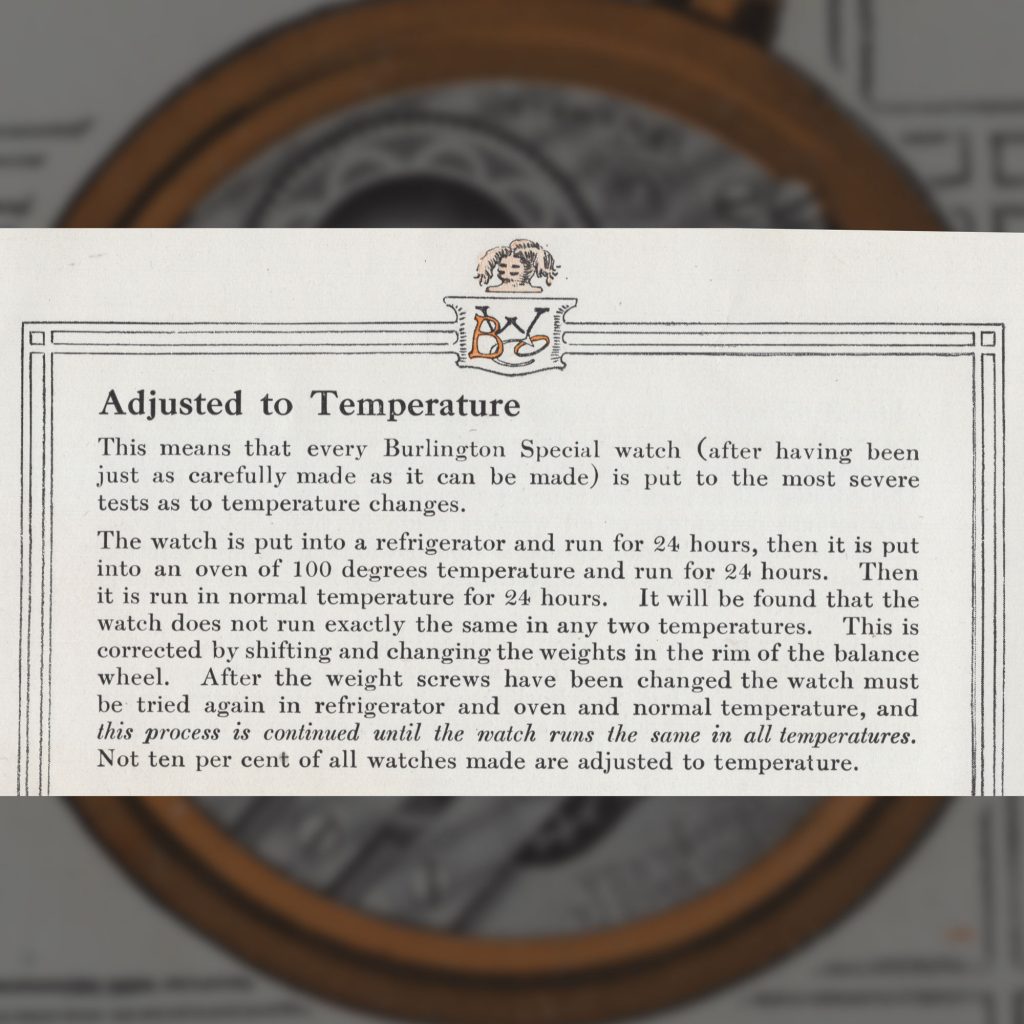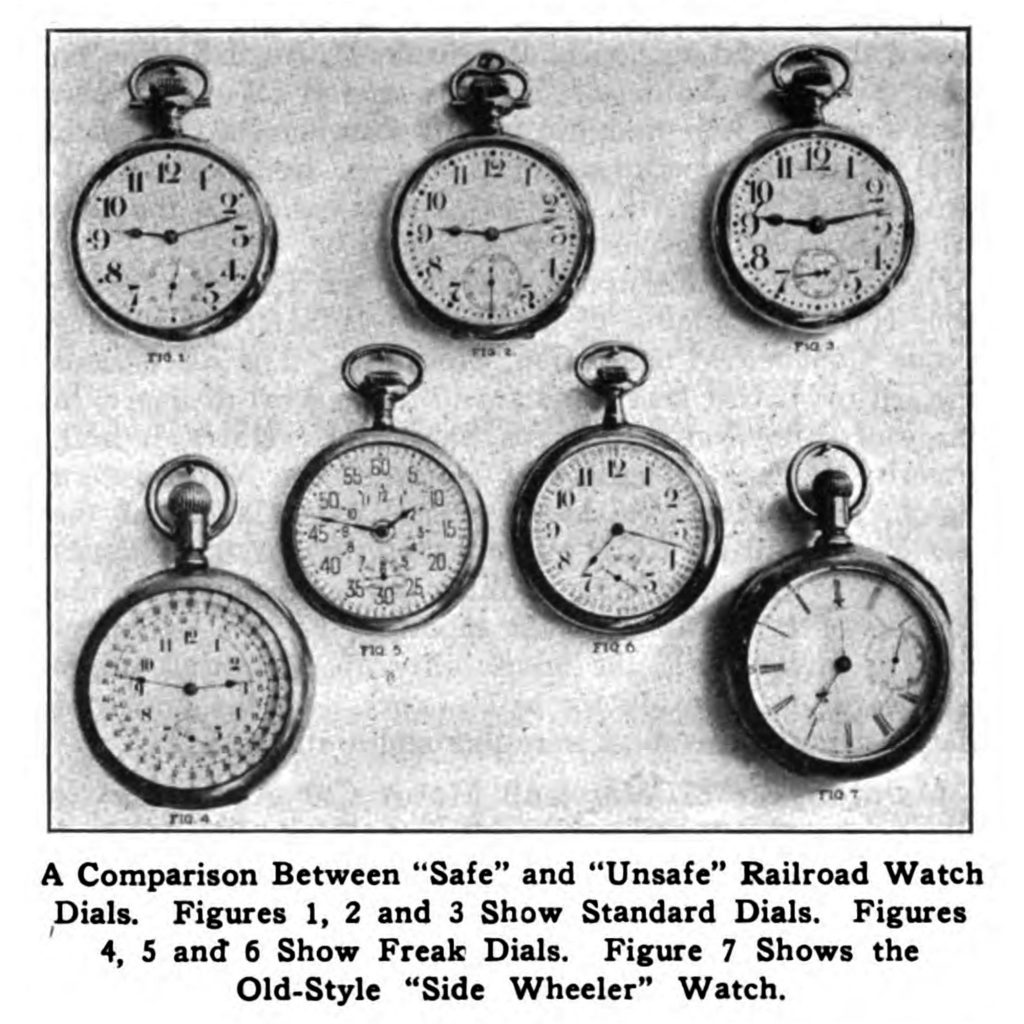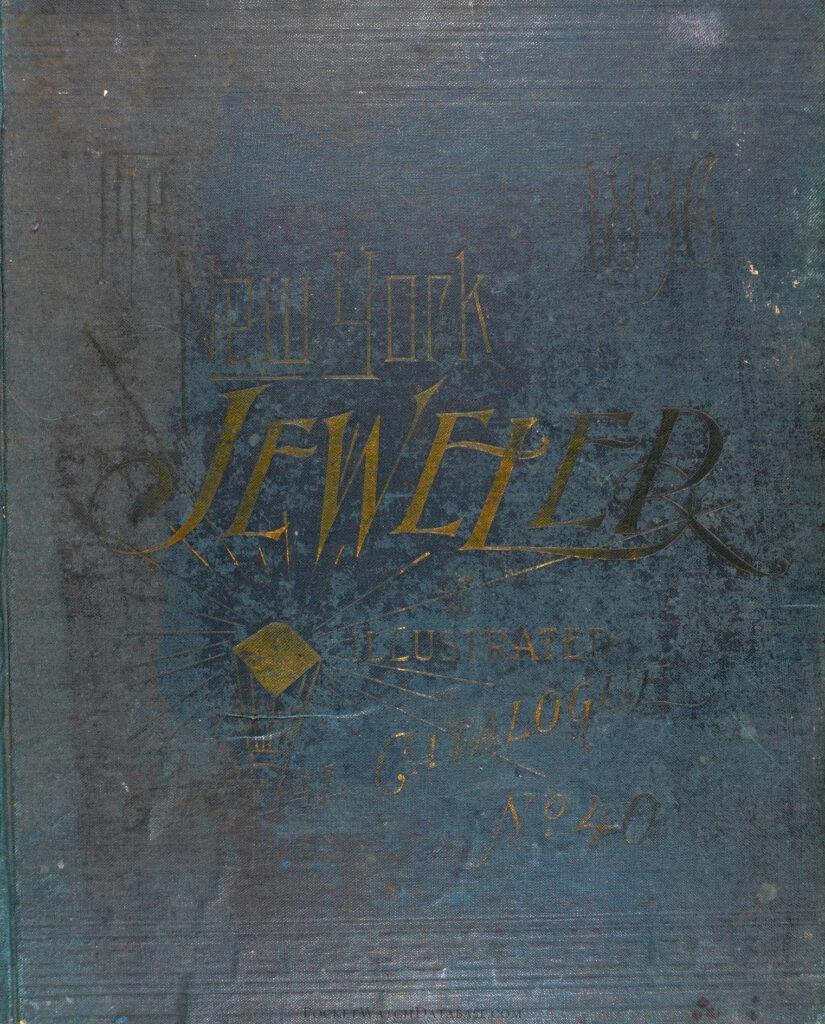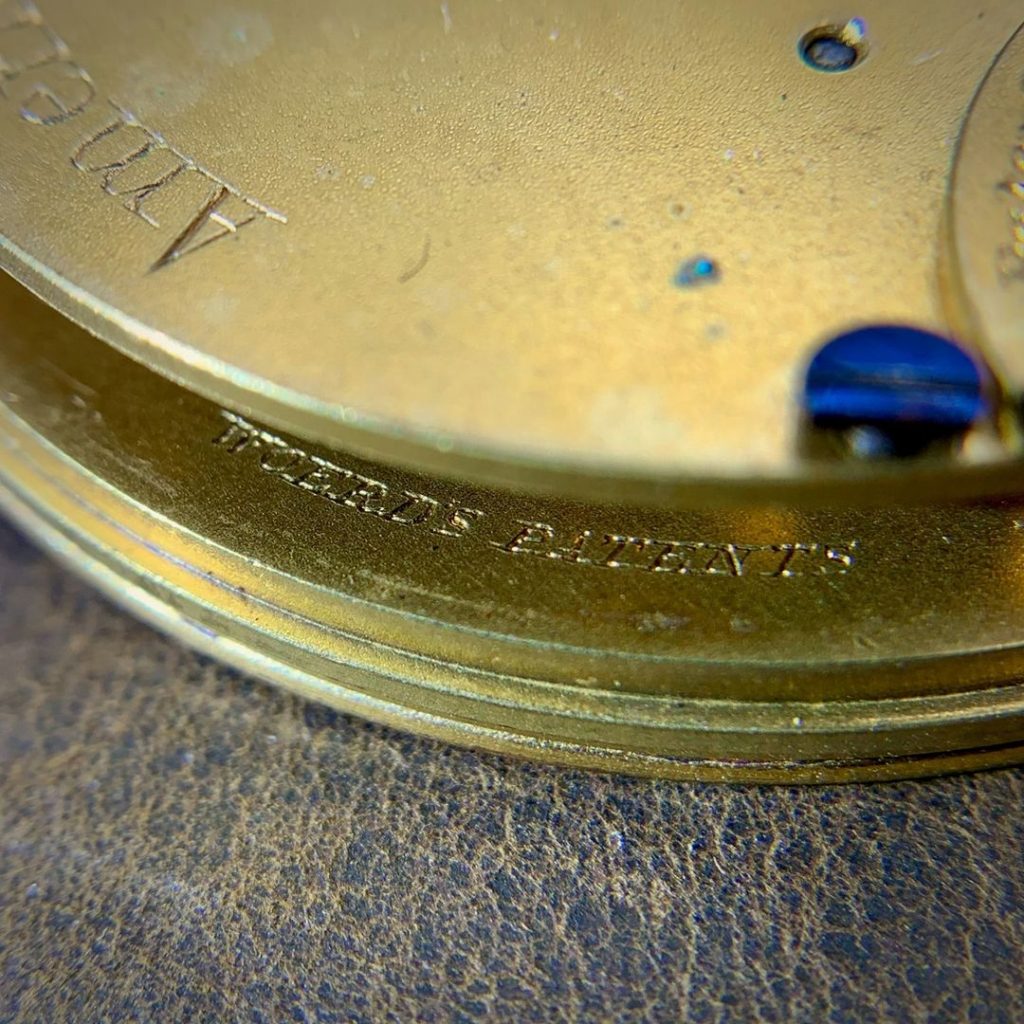Private Label Trade Names on American Pocket Watches: “Burlington Watch Co.” Part 13: Adjusted to Temperature

The second-generation 16-Size “Burlington Special” (Grade 185) was described in catalogs and advertisements as “Adjusted to Temperature.”
This claim contrasts the “Regulated to Temperature” terminology utilized for the unadjusted variant of the first-generation Grade 174 “Burlington Special.” By 1911, the company had certainly changed its opinion regarding temperature adjustment, previously conveying that the temperature compensation provided by the bimetallic balance was sufficient enough for precise timekeeping.
The c.1911 Burlington Watch Company catalog summarizes the temperature adjustment on the Grade 185 “Burlington Special”:
“Adjusted to Temperature. This means that every Burlington Special watch (after having been just as carefully made as it can be made) is put to the most severe tests as to temperature changes.
The watch is put into a refrigerator and run for 24 hours, then it is put into an oven of 100 degrees temperature and run for 24 hours. Then it is run in normal temperature for 24 hours. It will be found that the watch does not run exactly the same in any two temperatures. This is corrected by shifting and changing the weights in the rim of the balance wheel. After the weight screws have been changed the watch must be tried again in refrigerator and oven and normal temperature, and this process is continued until the watch runs the same in all temperatures. Not ten per cent of all watches made are adjusted to temperature.”
This updated summary is starkly different from the 1909 catalog describing the first-generation Grade 174 “Burlington Special”:
“Regulated to Temperature. By the use of varying metals (brass and oreide) counteracting each other in heat and cold, the watch does not show the susceptibility to thermometer changes that ordinary watches show. The so-called adjusting and the expense of process which bring up the prices of otherwise inferior watches are thus saved in the Burlington Special.”
From these descriptions, we can infer that the company was aiming to improve the “Burlington Special” watch when the Grade 185 variant was introduced, including new features to entice more customers.



